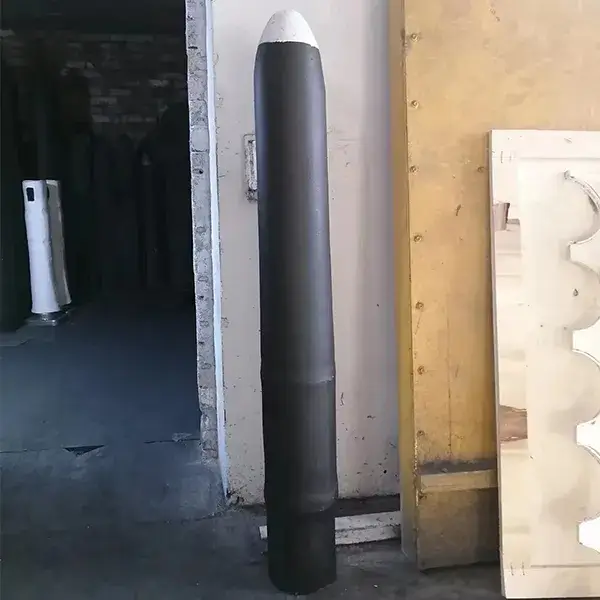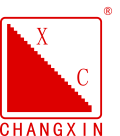The integrated taphole plug is a core control component in continuous casting processes, where its installation quality directly impacts steel flow stability, mold liquid level control precision, and production safety. Based on industry practices and technological innovations, this paper systematically outlines key technical points for integrated taphole plug installation, providing steelmakers with actionable operational guidelines.
Precise Preparation Before Installation
1. Plug Body Pre-treatment
Drying Process: Plugs must be dried in a 200-250°C oven for over 24 hours to ensure moisture content ≤0.5%, preventing cracking during baking. For instance, Pangang Group reduced plug breakage rates by 37% through strict control of drying curves.
Defect Screening: Ultrasonic flaw detection identifies cracks, focusing on the transition zone between the rod head and body, as well as metal joint connections. One steel mill experienced a molten steel leakage incident when a 0.3mm microcrack went undetected, causing the plug rod head to peel off during casting.
Coating Protection: Apply a 0.2-0.3mm thick anti-oxidation coating primarily composed of borate salts to the surface of aluminum-carbon plug rods. This extends high-temperature service life by 15%-20%.
2. Mechanism Condition Verification
Opening/Closing Mechanism Calibration: Measure the stroke error of the lifting mechanism to ensure a switching stroke of 50-60mm with repeat positioning accuracy ≤0.5mm. One enterprise achieved stroke deviation control within ±0.3mm by installing laser displacement sensors.
Lubrication System Maintenance: Apply molybdenum disulfide-based grease to the sliding guides via three-point lubrication, ensuring the starting torque is ≤50 N·m.
Argon System Leak Detection: Use a helium mass spectrometer leak detector to inspect the argon blowing channels of the stopper rods. The leakage rate must be ≤1×10⁻⁹ Pa·m³/s to prevent air ingress during casting, which could cause secondary oxidation.

Core Control Points in the Installation Process
1. Precise Verticality Control
Three-dimensional positioning method: Establish the centerline reference of the runner using a laser alignment instrument, ensuring the verticality deviation of the stopper rod installation is ≤0.5°. A special steel plant reduced crystallizer liquid level fluctuations from ±3mm to ±1mm through this method.
Dynamic Grinding Process: With the tap rod open, offset it 2-3mm toward the mechanism. Rotate it 3-5 turns in both directions at 5-10 N·m torque to create a 0.1-0.2mm grinding mark band on the contact surface, reducing the friction coefficient by 30%.
2. Connection Strength Assurance
Thread Locking Technology: Apply anaerobic adhesive to the threads of the metal connecting rod. After curing, the shear strength reaches ≥25MPa. One enterprise reduced thread loosening rates from 18% to 2% through this measure.
Dual Fixing Mechanism: Employ a combination of metal pins and threaded fasteners. Metal pins must have a shear strength ≥200 kN, while threaded connections maintain a preload within 80-120 kN·m.
3. Environmental Adaptability Design
Thermal Protection Structure: Installing 10mm-thick ceramic fiber boards on the mechanism housing reduces external surface temperature from 350°C to 120°C, extending hydraulic component lifespan by 2.3 times.
Cooling System Optimization: Adding φ8mm cooling air tubes to the front cover plate with argon flow controlled at 5-8 L/min lowers internal mechanism temperature by 80-100°C.
Post-Installation Quality Verification System
1. Static Inspection
Smoke Test: Place a smoke cake at the bottom of the nozzle and observe smoke emission from the top. The seal integrity must achieve over 95% with no leakage. A steel mill improved the seal integrity from 92% to 98% by modifying the plug head’s curvature radius.
Geometric Parameter Measurement: Use a coordinate measuring machine to inspect the coaxiality between the plug rod and nozzle. Deviation must be ≤1mm, and end face clearance ≤0.5mm.
2. Dynamic Testing
Simulated Casting Test: Conduct no-load operation at a pulling speed of 1.2 m/min. Verify the lifting mechanism’s response time is ≤0.8 seconds with no sticking or abnormal noises.
Hot State Validation: When the ladle is baked to 1100°C, inspect the thermal expansion compensation of the plug rod to ensure the reserved clearance remains within 3-5 mm.
Prevention and Handling of Typical Failures
1. Accelerated Erosion Issue
Material Optimization: Adopting MgO-Al₂O₃-C composite rod tips for calcium-treated steel grades reduces erosion rates by 40%. After implementation at a certain enterprise, plug rod service life increased from 6.5 hours to 9.2 hours.
Process Control: Strictly maintain molten steel superheat between 25-40°C. When superheat exceeds 50°C, activate emergency replacement protocols.
2. Structural Failure Cases
Deformation Correction: For ladles used over 50 times, inspect wall deformation using laser trackers. When deviations exceed 3mm, perform mechanical correction or scrap the ladle.
Hydraulic System Maintenance: Implement a regular hydraulic oil testing regimen. When particle contamination exceeds NAS 8 grade, replace the filter element and flush the lines.
Trends in Technological Innovation
Intelligent Monitoring System: Integrates strain sensors and temperature probes to monitor real-time stress conditions on plug rods. A pilot project achieved a 65% reduction in unplanned downtime.
3D Printing Technology: Utilizing selective laser melting to fabricate metal connecting rods, material utilization increased from 35% to 82%, with delivery cycles shortened by 70%.
Nano-Coating Application: Depositing an Al₂O₃-SiC nano-composite coating on stopper rod surfaces enhances thermal shock resistance from 5 to 12 cycles.
The installation of integrated ladle plug rods is a systematic engineering endeavor involving materials science, precision mechanics, and thermal engineering. Implementing standardized workflows, introducing intelligent inspection methods, and continuously optimizing material and manufacturing processes can significantly enhance the safety and economic efficiency of continuous casting operations. It is recommended that enterprises establish installation quality databases and utilize the PDCA cycle for continuous improvement, thereby building technological barriers in intense market competition.
